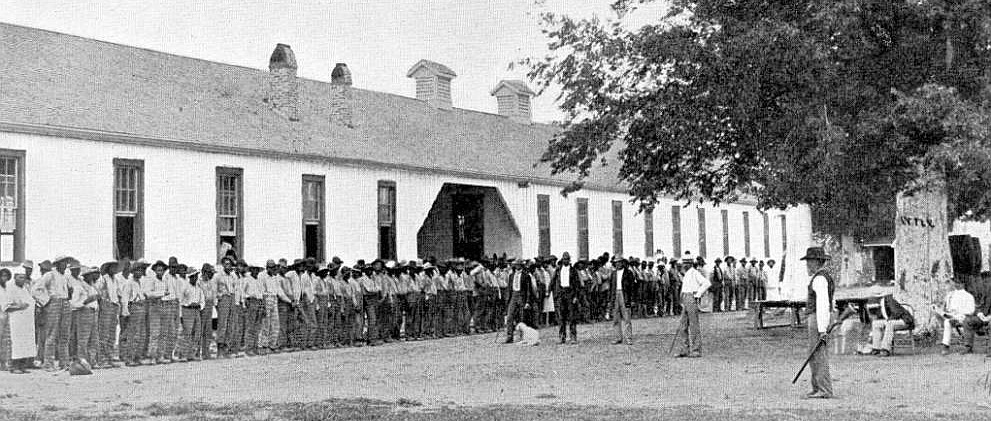The Louisiana State Penitentiary nicknamed the “Alcatraz of the South” is the largest maximum security prison in the country. Six thousand, three hundred men, 80 per cent of whom are black are held there. Before the Civil War, the prison property was known as the Angola Plantations and was owned by Isaac Franklin, who at the time owned the largest slave trading firm (Franklin & Armfield) in the United States. The prison grounds occupy a 28-square-mile area. To put that in perspective, the prison property covers an area larger than Manhattan (22.8 sq miles).
Angola’s origins as a prison date back to 1880. Then the state awarded the lease of Louisiana State Penitentiary and all of its convicts to a former Confederate Army officer, Samuel L. James. James purchased several plantations across Louisiana, in addition to the Angola Plantation. Inmates were housed in the old slave quarters and worked on his plantations. The majority of black inmates, however, were subleased to landowners to replace their emancipated slaves. They were leased to businesses to build levees, dig railroad tunnels, build roads, reclaim lowlands, and harvest crops. White inmates, seen as more intellectual, were given clerk and craftsmanship work.
Under this private prison system, profit was the main concern. Humane treatment of prisoners and accountability to the state of Louisiana were ignored. In many instances, inmates suffered worse abuse under the convict lease arrangements than under the now abolished slavery system. As a result, a constitutional ban of convict leasing was successfully adopted in 1898. The State of Louisiana purchased the prison camp from the James family in 1900 and assumed operational control in 1901. Thus, began state control of Angola prison. Much of the abuse and mismanagement, however, continued.
Presently, Angola has numerous enterprises. They include a license tag plant, printing services, and a mattress factory. Inmates cultivate, harvest, and process a variety of crops, making the facility self-supporting. Each year, the prison produces four million pounds of vegetable crops including cabbage, corn, cotton, strawberries, okra, onions, peppers, soybeans, squash, tomatoes, and wheat. The facility also has approximately 2,000 head of cattle, and some of the herd is sold at local markets for beef. Inmates also breed and train the horses used at Angola for field work. The prison is known for its professional rodeo which is held one weekend every April, and every Sunday in October. Inmates are allowed to participate in the events. The Angola prison rodeo is open to the general public and attracts 10,000 spectators annually.
At one time, 68 per cent of Angola’s inmate population were serving life sentences. Consequently, a large portion of its prison population consists of elderly inmates. In 2015 a class-action lawsuit (Lewis vs. Cain) was filed stating that inadequate inmate medical care is a violation of the Eighth Amendment’s prohibition against “cruel and unusual punishment”. According to the lawsuit, the Louisiana Department of Corrections (LADOC) neglected the serious medical needs of people incarcerated there. The lawsuit further claims that Angola is violating the Americans with Disabilities Act and the Rehabilitation Act, by not addressing the mobility issues of inmates who are physically unable to access parts of the prison. As of this writing, the two parties have not reached an agreement.


